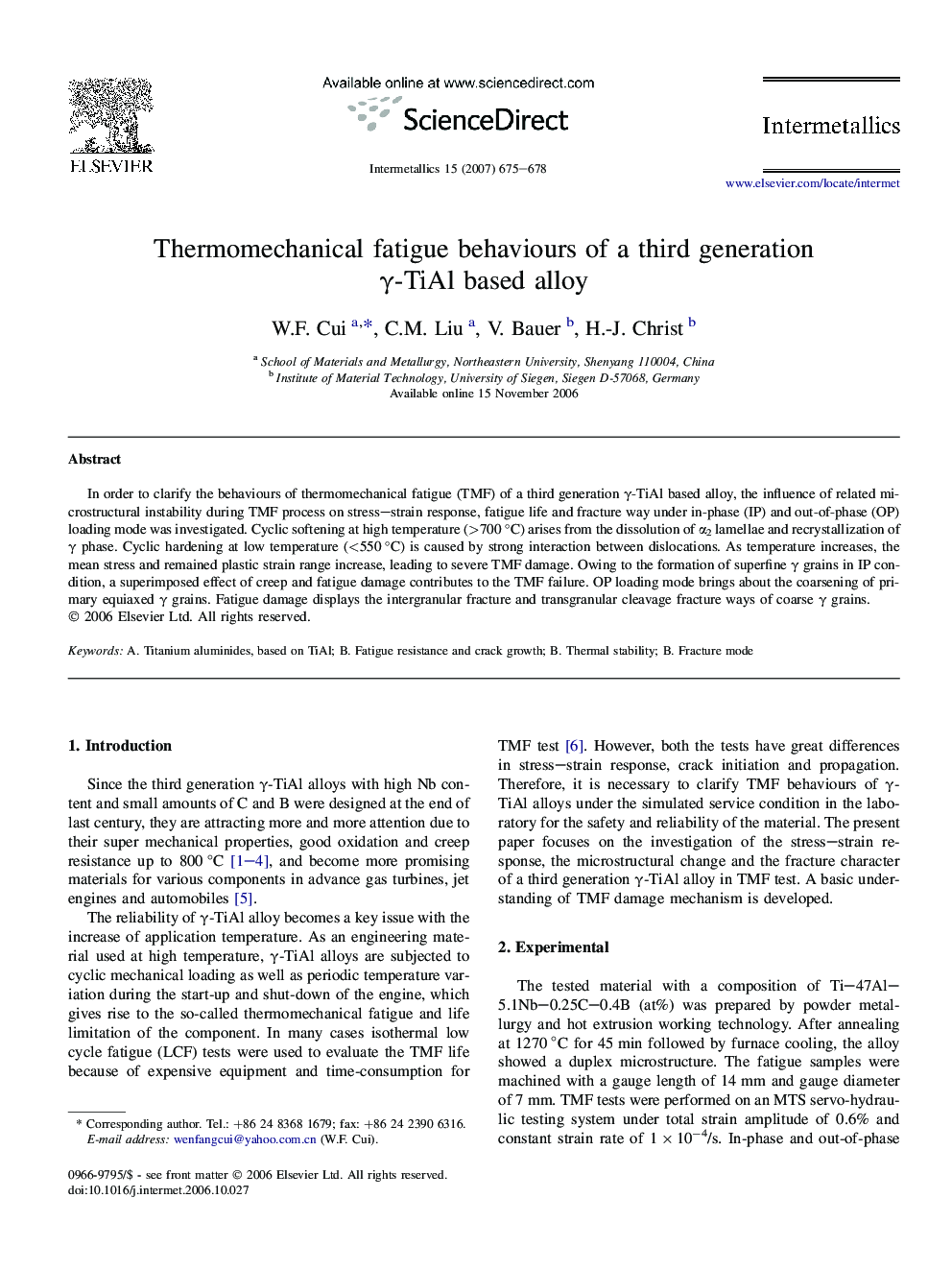| Article ID | Journal | Published Year | Pages | File Type |
|---|---|---|---|---|
| 1601793 | Intermetallics | 2007 | 4 Pages |
In order to clarify the behaviours of thermomechanical fatigue (TMF) of a third generation γ-TiAl based alloy, the influence of related microstructural instability during TMF process on stress–strain response, fatigue life and fracture way under in-phase (IP) and out-of-phase (OP) loading mode was investigated. Cyclic softening at high temperature (>700 °C) arises from the dissolution of α2 lamellae and recrystallization of γ phase. Cyclic hardening at low temperature (<550 °C) is caused by strong interaction between dislocations. As temperature increases, the mean stress and remained plastic strain range increase, leading to severe TMF damage. Owing to the formation of superfine γ grains in IP condition, a superimposed effect of creep and fatigue damage contributes to the TMF failure. OP loading mode brings about the coarsening of primary equiaxed γ grains. Fatigue damage displays the intergranular fracture and transgranular cleavage fracture ways of coarse γ grains.
